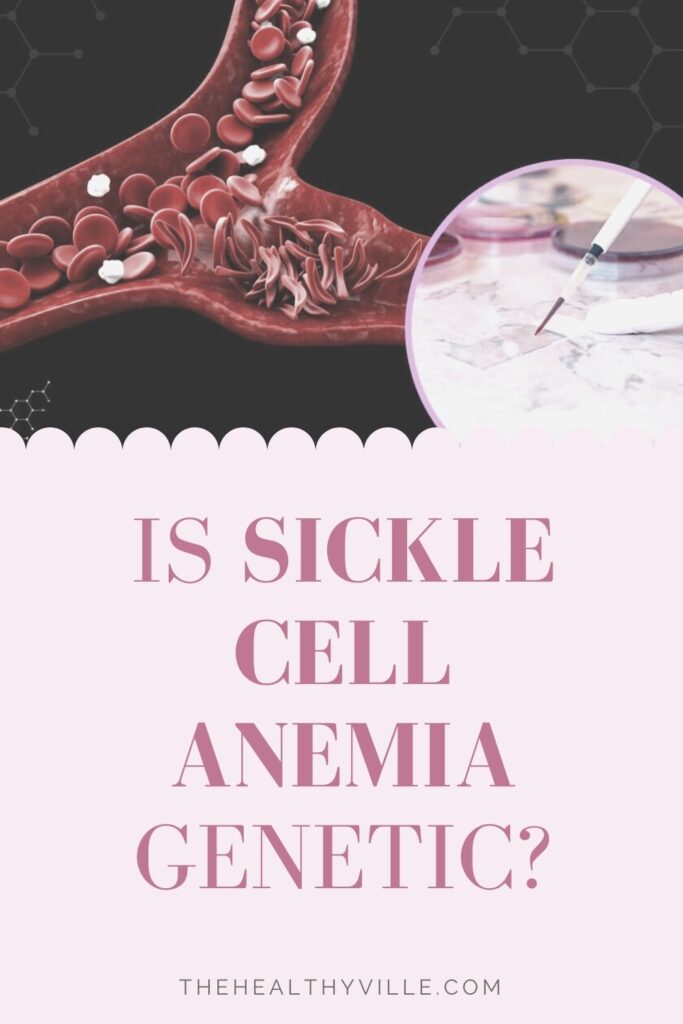Is sickle cell anemia genetic? Is it a hereditary disease? Learn more about it before it’s too late so you can treat it on time!
Sickle cell anemia is a disorder of the red blood cells. The red blood cells of those who suffer from this disease have an abnormal hemoglobin, the so-called sickle hemoglobin, which affects the correct performance of their function.
Remember that hemoglobin is the protein that carries oxygen, which is transported to all cells in the body thanks to the mobility of red blood cells through blood vessels. Considering that tissues need a constant supply of oxygen to function properly, if oxygen is not transported properly, it can cause serious damage to the body in the long term.
Sickle cell anemia accompanies the individual who suffers from it throughout his life. Also, its level of severity varies from person to person, and depends on how severe the hemoglobin defect is. Until just about five decades ago, the life expectancy of a person with this disease was only 14 years. Currently, in developed countries, life expectancy has increased to 40-60 years.
Is sickle cell anemia genetic?
Yes, sickle cell anemia is, indeed, due to a genetic defect. It is a recessive disease, that is, we have to receive the defective gene from both our mother and our father. This causes a special type of hemoglobin to be produced, called hemoglobin S. In the case of sickle cell anemia, it is called hemoglobin SS.
When someone inherits a single defective gene from one of their parents, their hemoglobin is said to have sickle-shaped traits. They rarely have problems similar to those with sickle cell disease. However, they are carriers of a genetic defect.
If your partner is also a carrier and they decide to have a child, there is a high probability that the child will inherit the disease. Anyone can tell if their hemoglobin is type S with a simple blood test.
When both parents have a normal and a defective hemoglobin gene, the chances that the child will inherit one or the other gene are as follows:
- 25% of inheriting the two normal genes.
- A 50% chance of inheriting both genes.
- 25% of inheriting the two abnormal genes and, consequently, developing the disease.
Symptoms of sickle cell anemia
Sickle cell anemia is present from birth, that is, it is a congenital disease. However, most newborns do not have any symptoms. These begin to appear from 5 or 6 months of age. There are also cases when the manifestations of the disease appear much later.
The early symptoms are as follows:
- Dactylitis, that is, inflammation of the hands and feet, usually accompanied by pain.
- Malaise and exhaustion. It is one of the direct effects of any type of anemia.
- Jaundice, that is, yellowish color of the skin and the whites of the eyes due to a deficiency of hemoglobin or, in this case, to defects in its structure.
Sickle cell anemia causes severe pain crises. Some experts argue that the level of this pain is higher than that experienced after surgery or childbirth. It usually appears on the arms, legs, chest, lower back, or abdomen. Despite the fact that some patients develop chronic pain that is difficult to manage, in most cases the episodes of pain are due to various factors:
- Stress.
- Dehydration.
- Geographic altitude.
- Changes in temperature.
- Diseases derived from sickle cell anemia.
Diagnosis and complications
Doctors diagnose sickle cell anemia with blood tests usually. The earlier they do it, the greater the treatment possibilities. In many parts of the world, doctors implement neonatal and even prenatal screening programs, in which case they analyze the amniotic fluid.
Sickle cell anemia can cause many complications, especially in the medium and long term. The most common are the following:
- Severe anemia: If the deficit of functional red blood cells increases too much, the patient is in serious danger of death. It is sometimes present in younger babies.
- Spleen damage: In this case, the risk of contracting bacterial diseases of all kinds increases dramatically.
- Acute thoracic syndrome: If the lungs do not receive enough oxygen, some areas will suffer some damage, preventing the lungs from carrying out their function normally. It is a serious problem you must treat urgently in the hospital.
- Brain complications: Up to 24% of people with sickle cell disease have strokes before the age of 45.
Other common complications include retinal damage, pulmonary hypertension, heart and kidney problems, painful erections, gallstones, liver complications, leg ulcers, and joint pain. It can cause growth to slow down and pregnancies to be risky.
Don’t forget to SHARE is sickle cell anemia genetic with your friends and family on your social networks!

